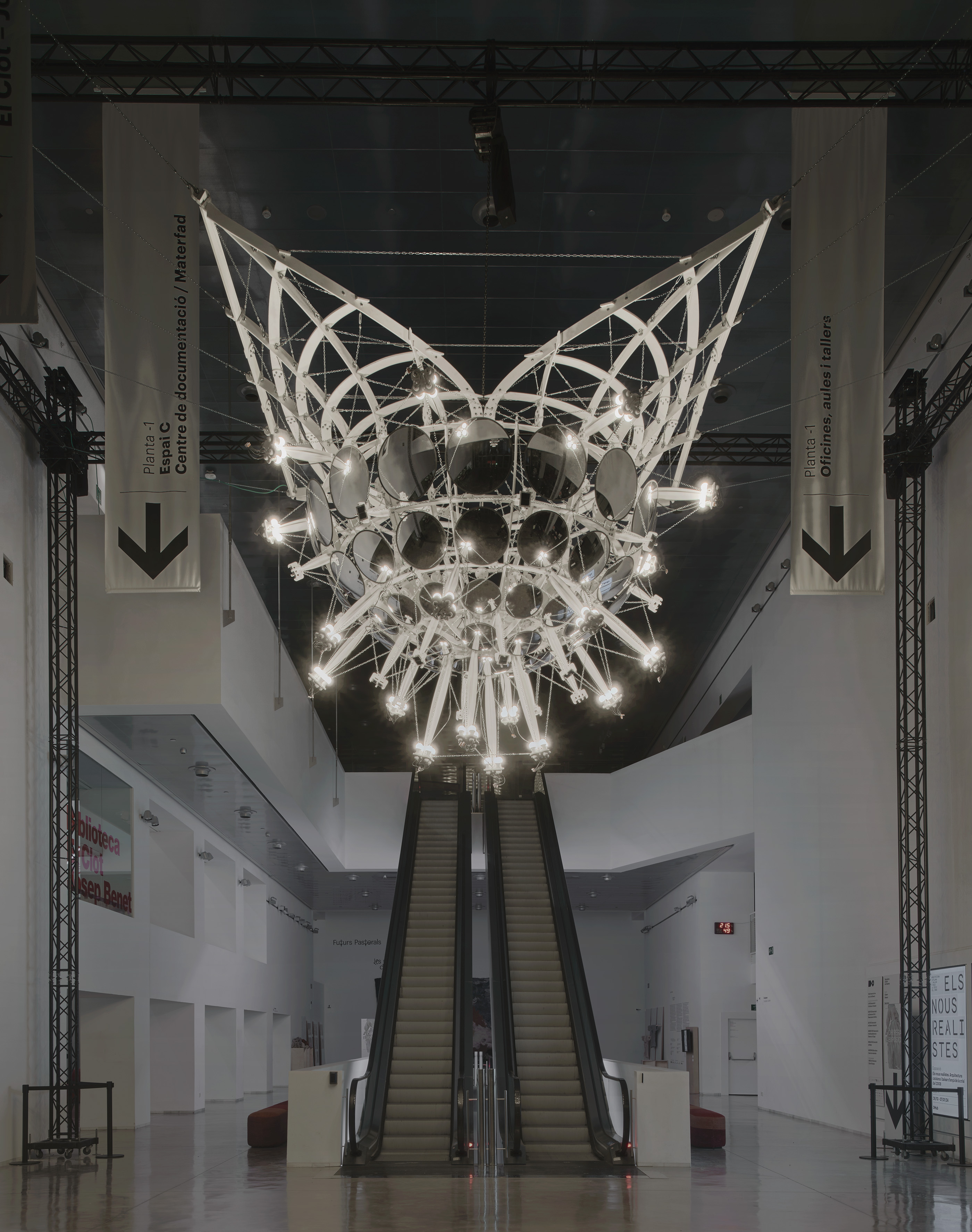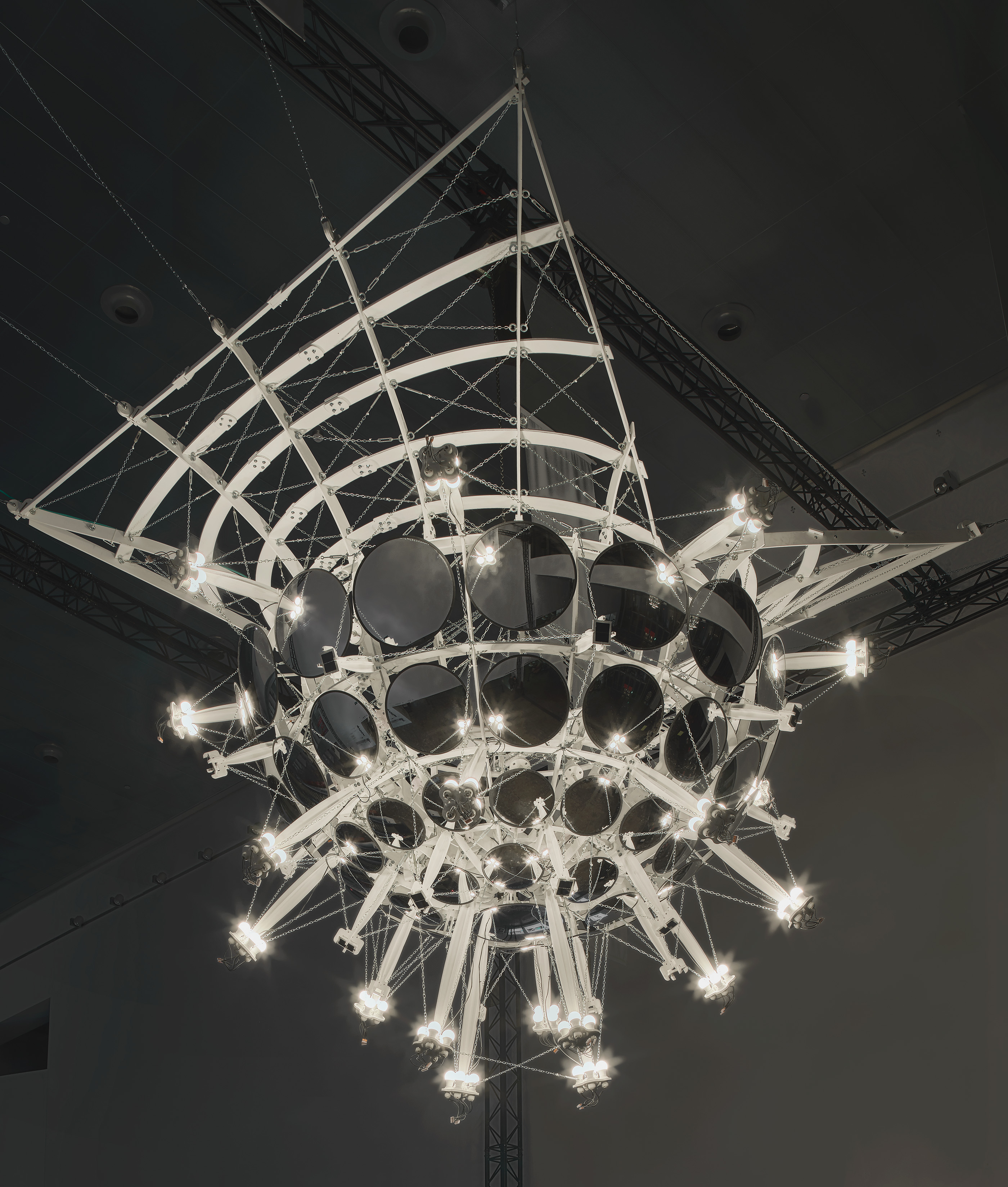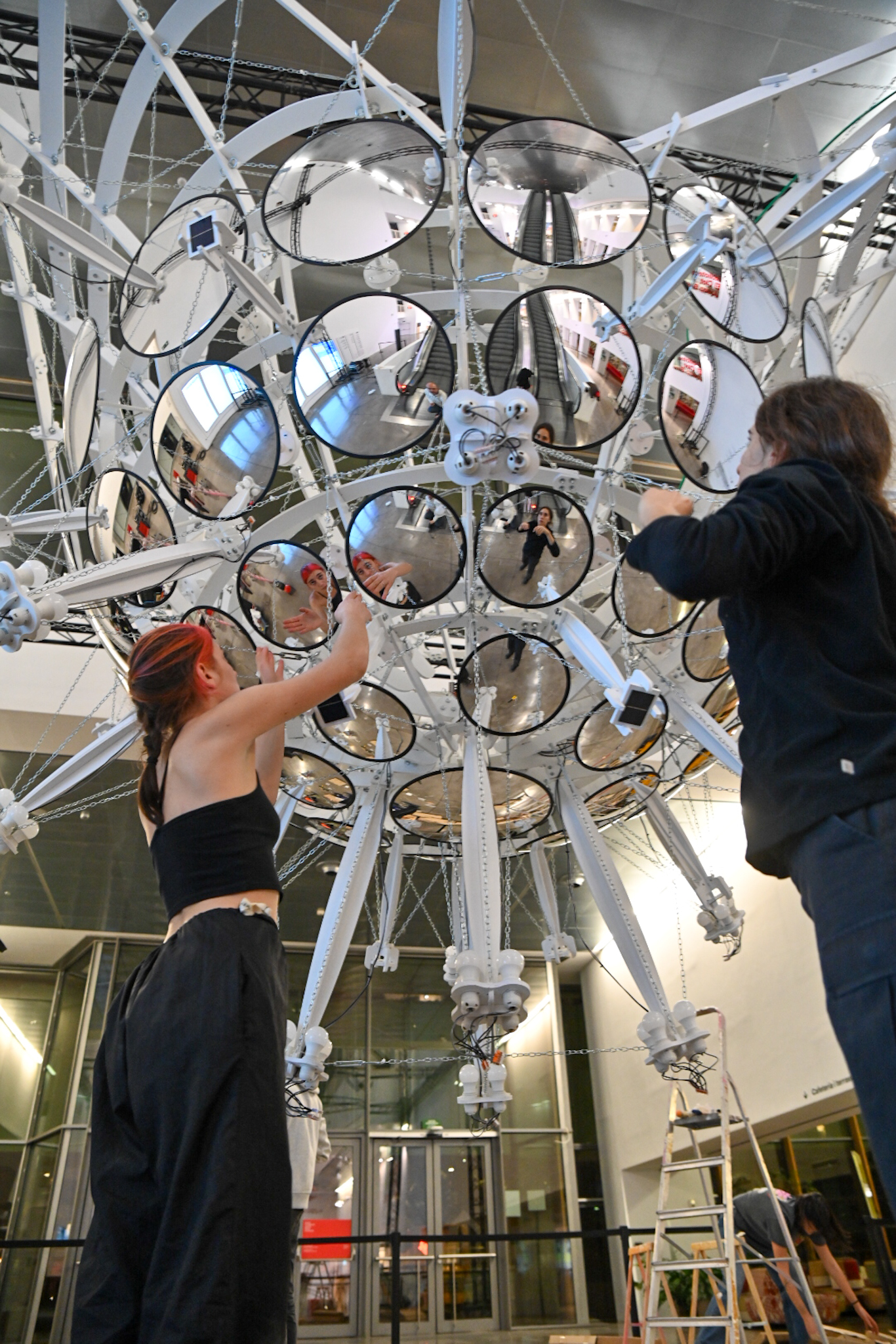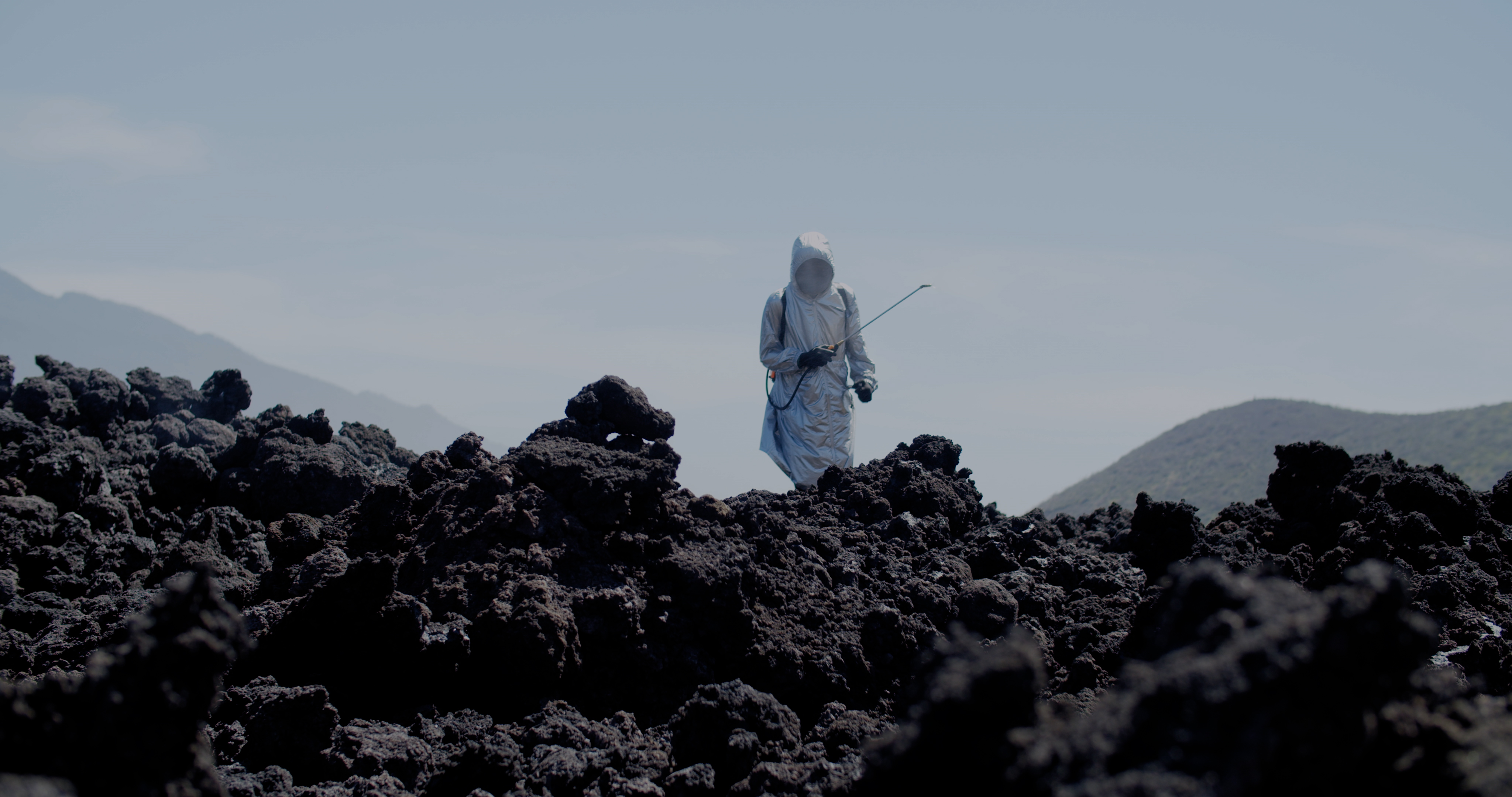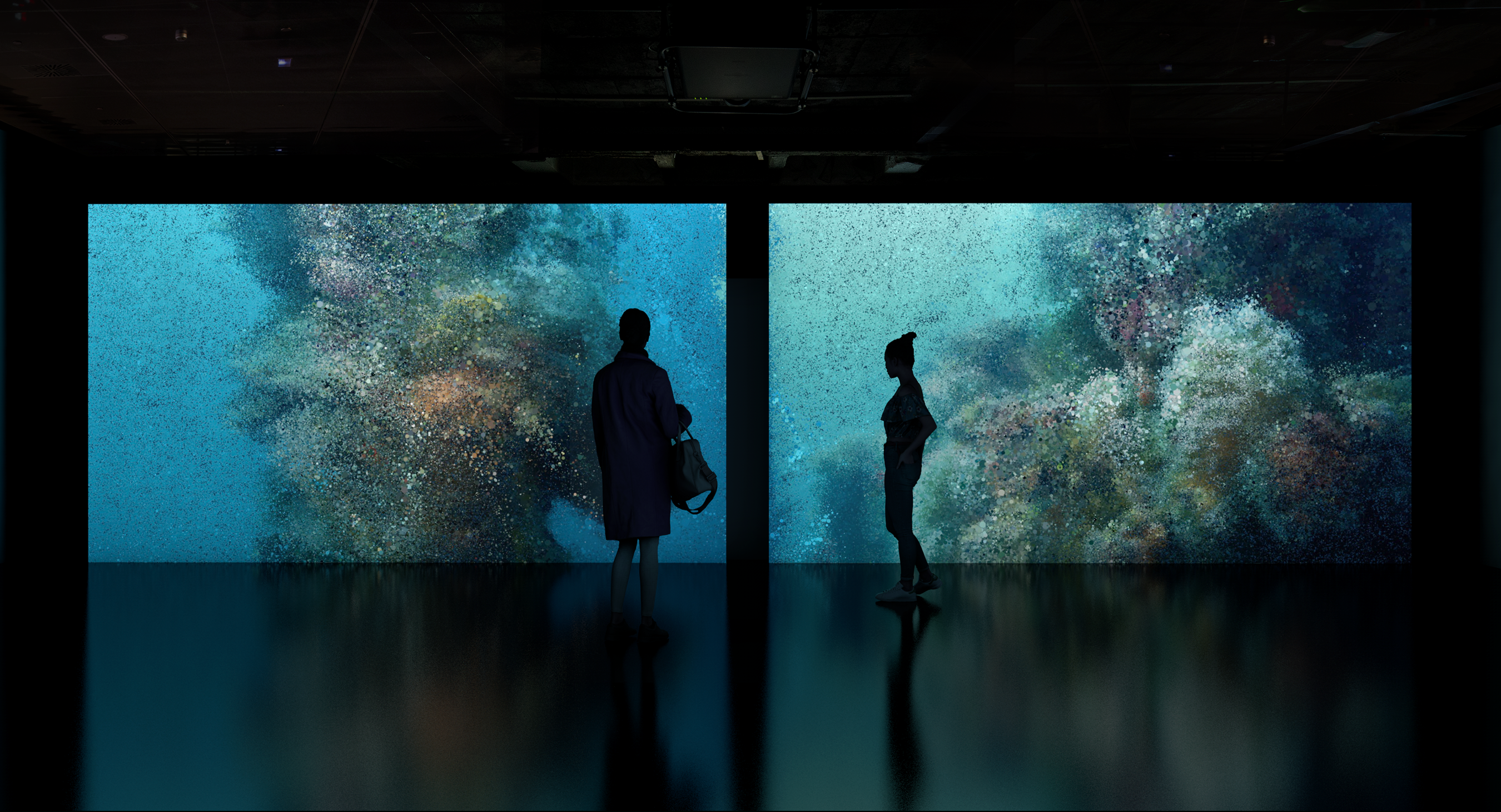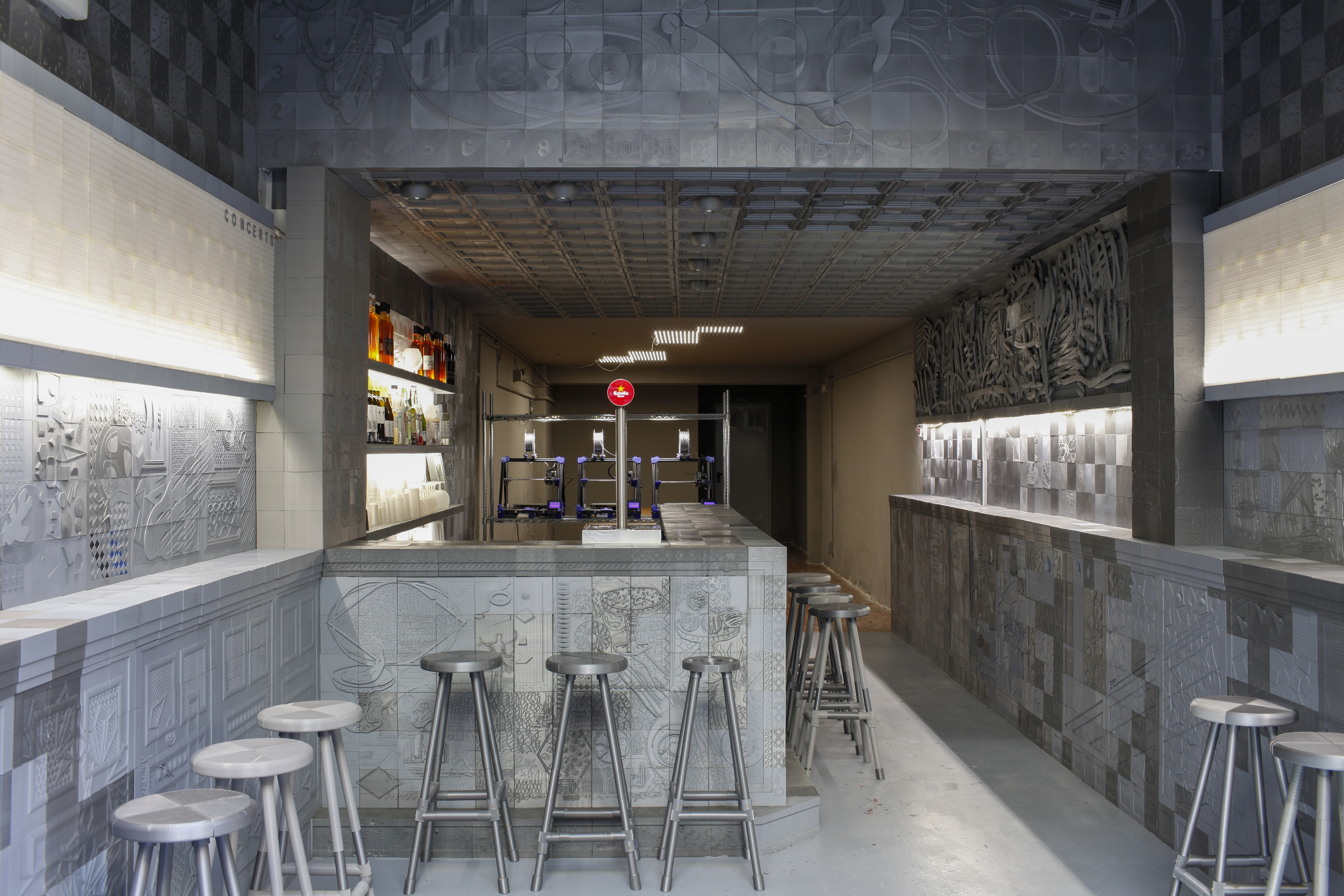ESPILL
A satellite for the solstice
December 11, 2023–March 10, 2024
Barcelona 08018
Spain
Hours: Tuesday–Sunday 10am–8pm
T +34 932 56 67 00
dhub@bcn.cat
DHub, Disseny Hub Barcelona will welcome the Christmas season a new speculative design installation hanging from the ceiling of its lobby: Espill: a satellite for the solstice by architecture studio TAKK. Starting from the iconography of the Star of Bethlehem, ESPILL triggers a debate on the increasing problem of light pollution resulting from actions such as the massive deployment of Christmas lights in urban spaces and the increasing number of lights in the sky emitted by objects of human origin in orbit.
TAKK’s intervention, curated by Jose Luis de Vicente, DHub's artistic director, takes the shape of a life-size reproduction of a 5 meter diameter satellite weighing 180 kg: a sphere covered by mirrors on one side. The speculative project also includes the implementation plan how the satellite would be sent into space, what it would look like from Earth and how it would orbit around our planet.
ESPILL would be be sent into space and orbit around the Earth, refracting sun's rays in its mirrors, producing a point of light that could be seen from different parts of the Earth each night. After the holiday season, the satellite would spin on its axis to point the mirror in the direction of space, turning off the light until the following year.
The debate on light decorations
The installation highlights how light pollution has increased in cities and its effects on the environment and non humans living in urban envirornments. And it does so at a key time: Christmas. It thus opens up the debate on Christmas lights, which are linked to the history of the commodification of this celebration and the electrification of cities as a discourse of progress.
Espill uses the imagery of the star that, according to Christian tradition, led the Three Wise Men to Bethlehem and proposes replacing all lighting on the streets with a single point of light in the sky. This would reduce light pollution and save energy, because the light would be caused by the refraction of sunlight, which would not require any additional energy.
Reflection on the commercialisation of space
The installation also encourages viewers to reflect on another phenomenon that has increased the problem of light pollution in recent years. It is the gradual colonisation of the low orbit of the Earth with satellites launched by humans for commercial gain. The number of commercial satellites in low Earth orbit has doubled since 2019 as a result of the emergence of mega-constellations of commercial services such as StarLink. Entrepreneurs such as Elon Musk have embarked on a race to get a share of space, driven by the good prospects of an industry that is generating a lot of commercial interest.
The increasing amount of light emitted on Earth and in space is making it increasingly difficult to see a dark sky or the stars. Furthermore, light pollution is extremely disruptive to natural ecosystems. The darkness of the night has been the natural environment of many species for thousands of years.
Design-based proposals
This speculative design project seeks to show how design can be useful for asking questions and triggering discussions on issues of concern to society. It also aims to make suggestions and propose other possible scenarios. “One of the greatest powers of design is the ability to imagine other forms of living, other imaginaries, suggest that things might be different. And, far from saying that we have found a possible solution, this project invites us to ask questions and seek other ways of imagining reality”, emphasised Jose Luis de Vicente.
The artists: TAKK architecture
TAKK architectur, founded in Barcelona by Mireia Luzárraga and Alejandro Muiño, has been developing projects on feminism, environmentalism and politics in architecture to trigger more democratic lives for years. The firm, whose private and public clients include FRAC-Centre Val de Loire, the Valencia Institute of Modern Art (IVAM), Barcelona City Council, FAD, Fitur, Vitra, Swatch and Hermès, has achieved an important international presence. It has received recognitions such as the COAM and FAD awards, and its work has been featured in exhibitions held at Matadero-Madrid, Santa Mònica Arts Centre, Barcelona Centre for Contemporary Culture (CCCB), MAK Vienna, TCDC Bangkok and Alcova Milano.
